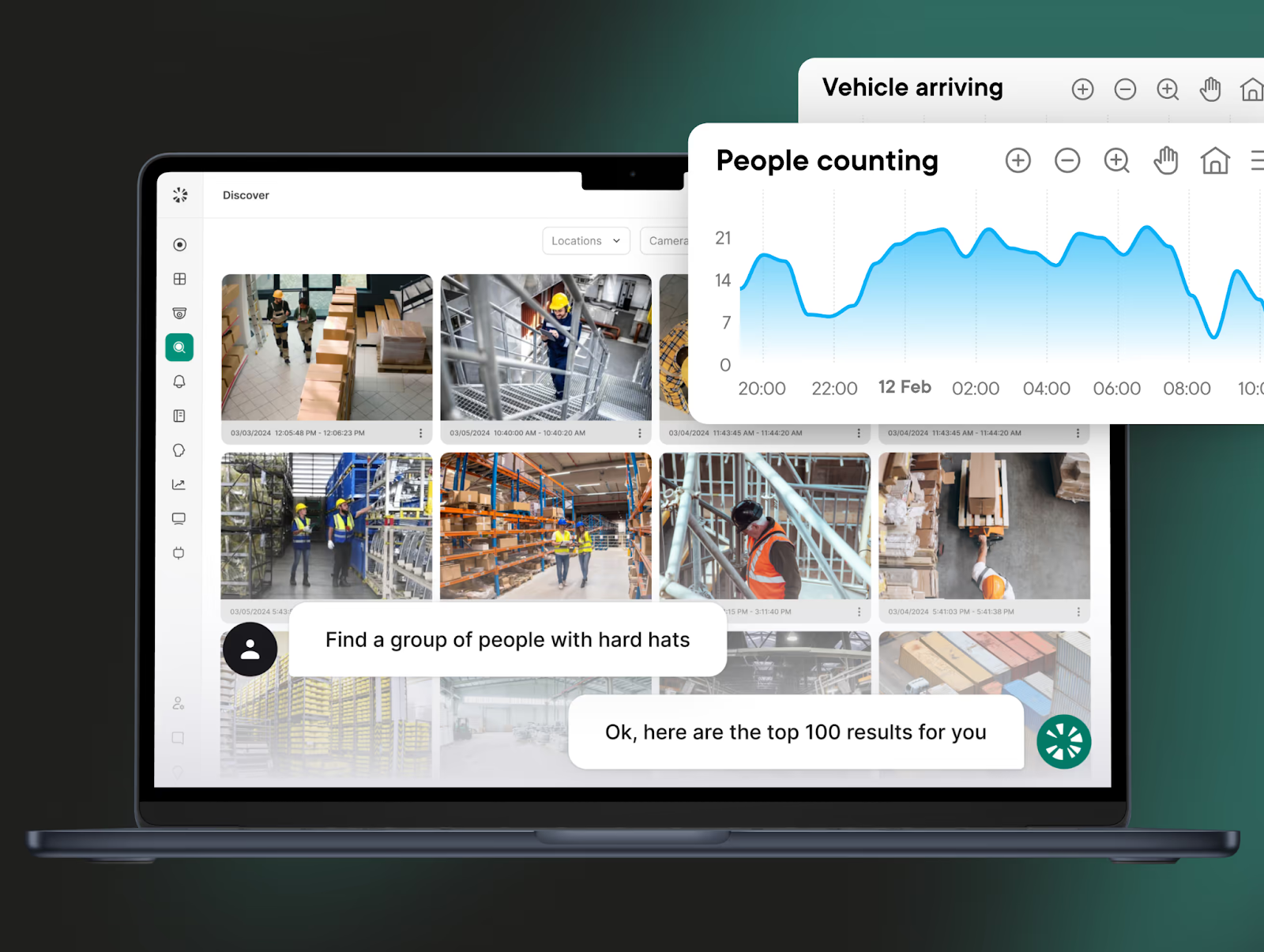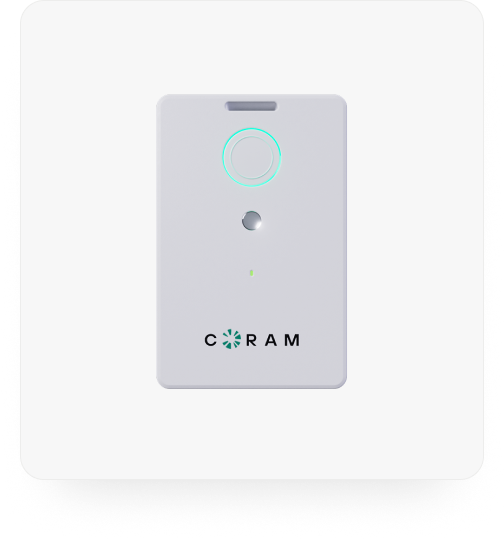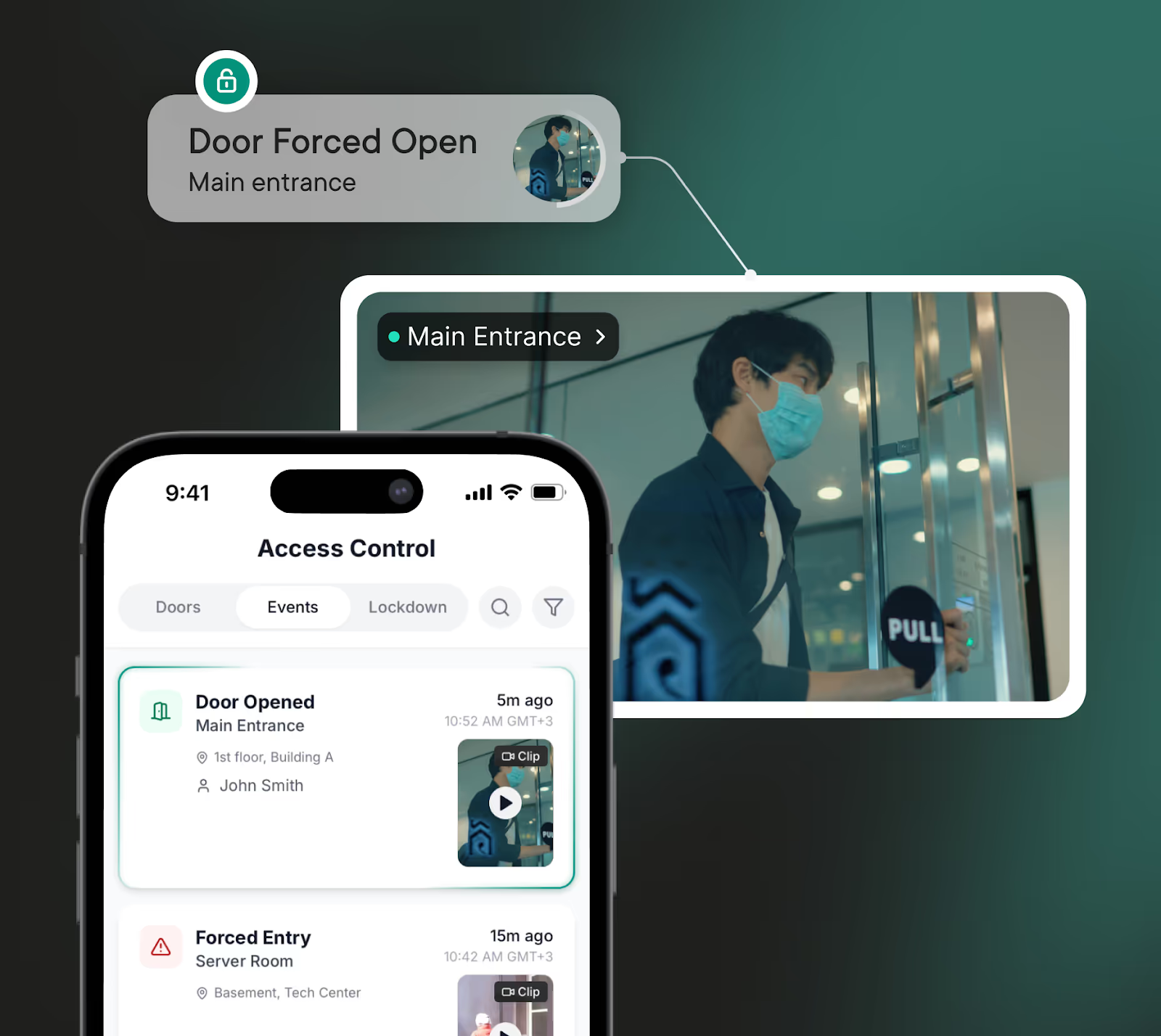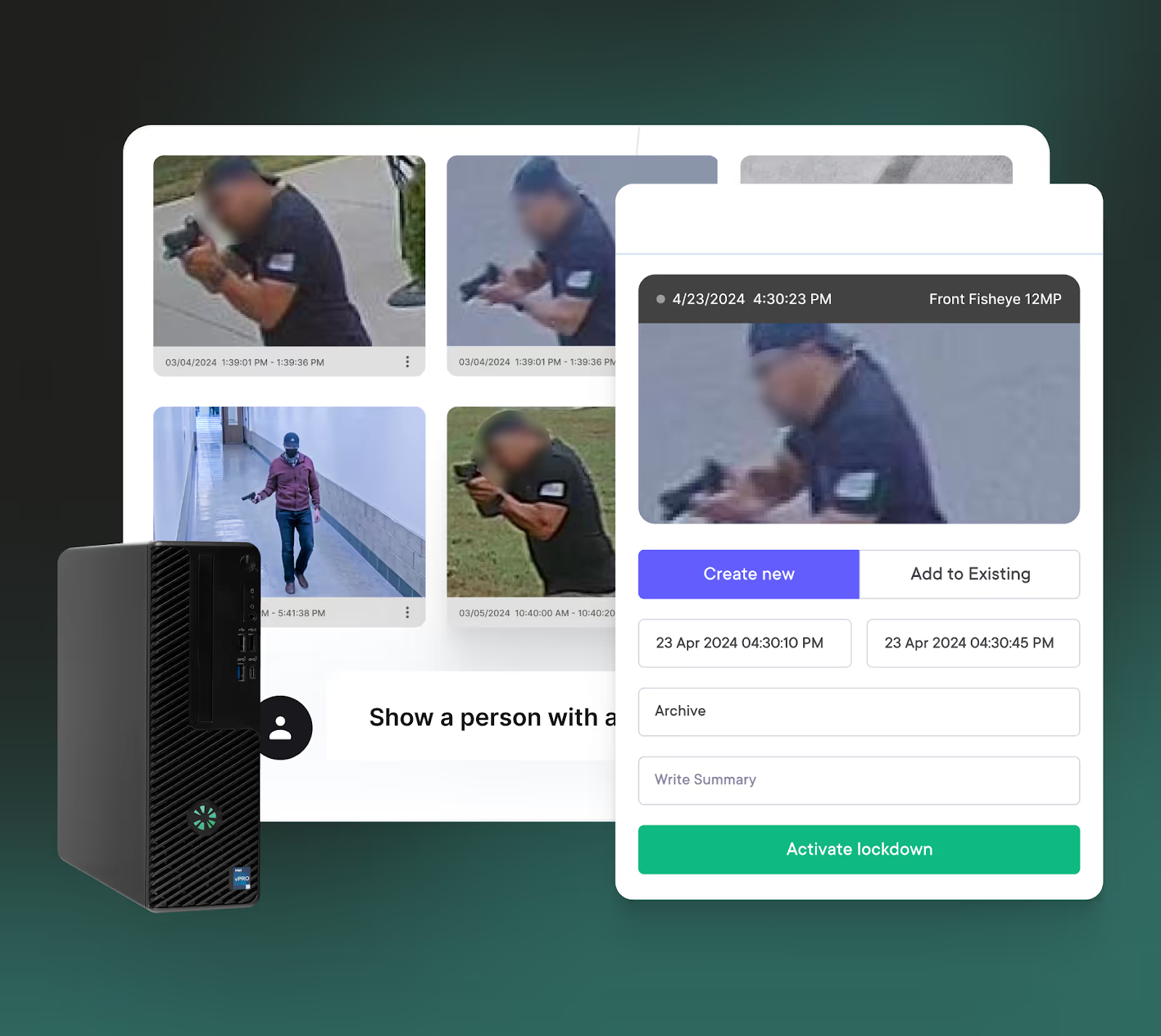In the U.S., 70% of organizations reported a safety incident involving someone working alone in the past three years, and one in five of those incidents were rated “quite or very severe.”
That stark reality raises the question: Are your lone workers truly protected?
Here’s what you’ll discover in this article:
- What lone worker safety devices are and how they keep your team safe, from panic buttons to access control and video systems.
- Why a unified, integrated platform outperforms siloed solutions in real-world emergency scenarios.
- Smart safety best practices and answers to your top FAQs on compliance, functionality, and industry-specific needs.
What is a Lone Worker Safety Device?
A lone worker safety device is a piece of technology, often a wearable gadget, smartphone app, or small portable unit, designed to protect employees who work out of sight and sound of others. Its purpose is simple but critical: if something goes wrong, help can be summoned immediately, even when no one else is nearby.
These devices combine real-time monitoring with emergency response features to reduce the risks of working alone. Instead of relying on outdated manual check-ins, they give organizations instant visibility into a worker’s status and location.
Common features include:
- SOS/Panic button: One-press alert that connects the worker directly to supervisors or emergency responders.
- Automatic fall or inactivity detection: Sends an alarm if a worker collapses or remains motionless for too long.
- GPS and geofencing: Tracks exact worker locations and creates safe zones with instant alerts when boundaries are crossed.
- Two-way communication: Enables quick voice, text, or push-to-talk interaction for real-time support.
In essence, lone worker safety devices act as a lifeline, turning an isolated shift into one that’s visible, supported, and far less risky.
How Do Devices Protect Lone Workers?
Lone worker safety devices act as a lifeline in high-risk situations, ensuring workers in isolated roles can always be monitored and supported. They combine sensors, connectivity, and communication features to provide early warnings and fast intervention when something goes wrong.
Core Protective Features
- Panic buttons: A quick press immediately signals distress and shares the worker’s location with supervisors or a monitoring center.
- Automatic fall and man-down detection: Built-in accelerometers and motion sensors identify slips, trips, or extended inactivity and trigger an alarm without manual input.
- GPS and geofencing: Real-time location tracking helps teams pinpoint a worker instantly. Geofencing creates safe zones, sending alerts if someone enters hazardous or restricted areas.
- Two-way communication: Voice calls, push-to-talk, or text-based alerts keep the worker connected for fast clarification and support.
How the Response Process Works
- Alert trigger: Activated either manually through an SOS button or automatically by the device detecting unusual activity.
- Connection established: The device links through cellular, Wi-Fi, or satellite to the control center or designated responders.
- Information shared: GPS coordinates, motion data, or audio feeds are transmitted to provide full situational awareness.
- Action taken: Supervisors evaluate the alert and coordinate the right response, from dispatching emergency services to alerting nearby colleagues.
These devices dramatically reduce response times in emergencies where every minute counts. They also ease mental strain for workers who might otherwise feel vulnerable, knowing there is a reliable system watching over them.
Employers demonstrate clear compliance with duty-of-care standards and strengthen workplace safety culture.
How Coram Ensures Lone Worker Safety
For many organizations, the biggest challenge with lone worker safety is not deploying devices but the gaps between siloed tools. A panic button may send an alert, but without video context, responders lose precious time verifying what’s happening.
Access control might log entry into a high-risk zone, but without real-time monitoring, it won’t help in an active threat. Coram eliminates these blind spots by connecting multiple safety systems into one unified platform that works seamlessly to protect lone workers.
Video Security System
When incidents occur, employers often struggle with visibility. Was the worker injured? Was there an intruder? Did they simply miss a check-in?
Without context, response time slows and decisions are made in the dark. Coram’s AI-powered video security fills that gap.

It monitors activity in real time, detecting unusual behaviour or unauthorized presence, and streams immediate visuals to safety teams, so every alert is paired with instant situational awareness.
Emergency Management System
During emergencies, delays in communication can make a minor incident life-threatening. Workers often report that alarms are raised, but help takes too long to arrive because alerts don’t reach the right people fast enough.

Coram solves this with an automated emergency management system that routes critical information, such as location, nature of threat, and live video, to designated responders immediately. Escalations are built in, so if one supervisor doesn’t respond, the next in line is notified within seconds.
Panic Button
For lone workers, one of the biggest fears is not being able to call for help quickly enough, especially in high-stress or violent encounters.

Coram’s panic button provides a discreet, immediate way to send an SOS. Once pressed, it automatically shares GPS location, activates live monitoring, and alerts response teams, all without the worker needing to explain their situation.
Access Control System
A common issue in facilities with lone workers is exposure to restricted or high-risk areas. Workers may enter zones without anyone knowing, leaving safety managers blind in the event of an accident.

Coram’s access control system prevents unauthorized entry and creates a real-time audit trail of movements. In emergencies, supervisors can see exactly where a worker was last located, enabling faster intervention.
Weapon Detection System
Workplace violence is a rising concern in sectors like healthcare, retail, and education. Traditional lone worker devices aren’t designed to spot external threats before they escalate.

Coram’s weapon detection system adds a proactive layer of defense by using AI-driven analytics to identify weapons in real time. When a potential threat is detected, it immediately triggers coordinated alerts across video, access control, and emergency channels, helping prevent violence before it reaches the worker.
Integration of All Systems
One of the biggest frustrations for organizations is juggling disconnected safety tools. A panic button might send an alert, but without location data, responders don’t know where to go.
Video cameras may capture activity, but they’re not tied to access logs or emergency notifications. This lack of integration slows down response times and creates room for error, precisely when clarity is most important.
Coram removes those gaps by bringing video security, panic alerts, access control, emergency management, and weapon detection into a single, connected platform. Each system feeds into the other, creating a seamless safety ecosystem. For example, when a lone worker presses the panic button, Coram can:
- Instantly stream live video from the worker’s location to supervisors.
- Activate access control protocols, locking or unlocking doors to contain the threat.
- Trigger emergency notifications to the right responders with full context.
- Leverage weapon detection or motion analytics to identify the nature of the threat in real time.
Instead of wasting precious minutes coordinating between siloed tools, Coram enables a coordinated response within seconds. The result is faster intervention, fewer blind spots, and a stronger duty of care for organizations serious about lone worker safety.
Best Practices for Lone Worker Safety
Technology plays a huge role in protecting lone workers, but it’s only one part of the equation. A strong program combines planning, communication, equipment, and culture to make sure no worker is ever left unprotected.
Here are the practices that consistently make the biggest difference:
Planning & Risk Assessment
Before a lone worker begins any task, hazards must be evaluated in detail. Jobs involving live electrical systems, confined spaces, or highly hazardous materials should never be done alone. Employers should:
- Conduct risk assessments to identify environmental, health, and security threats.
- Develop a clear daily work plan that shares the worker’s location, tasks, and expected completion time.
- Ensure the right protective equipment and emergency tools are available before work begins.
Communication & Monitoring
One of the leading failures in lone worker safety is delayed response due to poor communication protocols. To prevent this:
- Set structured check-in schedules with supervisors or designated contacts. Always establish a backup in case the primary contact is unavailable.
- Use technology such as GPS-enabled devices, panic alarms, and mobile safety apps for real-time status updates.
- Implement a robust emergency response plan with escalation rules if a worker misses a check-in or enters a high-risk situation.
Equipment & Training
Even the best plans fall short without the right tools and preparation. Workers should have access to:
- PPE, first-aid kits, and reliable safety devices like fall detectors and SOS alarms.
- Thorough training on how to use the equipment, respond to emergencies, and follow reporting protocols.
- Periodic mock drills to test readiness and identify gaps in procedures.
Building a Safety-First Culture
Perhaps the most overlooked best practice is cultivating a culture where workers feel supported and empowered. This includes:
- Encouraging employees to report unsafe conditions or instincts without fear of retaliation.
- Reinforcing that it’s acceptable to pause or stop a task if conditions feel dangerous.
- Promoting situational awareness, such as paying attention to surroundings, potential threats, and early warning signs of hazards.
When organizations combine these practices with the right lone worker safety devices, they not only meet compliance requirements but also create a workplace where employees trust that their safety is prioritized every moment they’re on the job.
Ready to Rethink Lone Worker Safety?
Lone worker safety depends on proactive planning, reliable technology, and seamless communication. The right devices and systems ensure faster responses, fewer risks, and greater confidence for both workers and organizations.
- Assess risks upfront: Identify hazards and plan safety measures before lone work begins.
- Use smart devices: GPS trackers, fall detection, and panic buttons keep workers connected at all times.
- Unify safety tools: Integrated video, access, and emergency alerts eliminate delays during incidents.
- Strengthen safety culture: Encourage reporting, training, and trust in safety protocols.
Coram brings these elements together in one connected platform, giving organizations the visibility and control they need to keep lone workers safe in every environment.
FAQ
A lone worker monitoring system is a technology-driven solution that helps keep employees safe when they’re working without direct supervision. It uses tools like wearable devices, smartphone apps, or integrated platforms to track a worker’s location in real time and monitor their well-being.
If a worker presses a panic button, stops moving for too long, or suffers a fall, the system automatically sends an alert to supervisors or a monitoring center. This ensures that help is dispatched quickly, turning a potentially dangerous situation into one that’s managed with speed and accuracy.
Lone worker devices use GPS, sensors, and communication technology to keep workers safe. They track real-time location, detect falls or inactivity, and provide an SOS button for emergencies.
When triggered, either manually or automatically, the device sends an alert with the worker’s location and incident details to supervisors or monitoring teams, enabling an immediate response. This mix of detection, alerts, and rapid communication ensures lone workers are always within reach, even in high-risk or remote environments.
A lone worker is anyone who performs their job without close supervision, where immediate help isn’t available. This can include retail staff on night shifts, home healthcare providers, delivery drivers, technicians, construction or cleaning crews, security guards, and workers in remote fields like utilities, mining, or agriculture. The common factor is isolation, which increases risk and makes proactive safety measures essential.
No, lone worker devices are not specifically mandated by U.S. law. However, OSHA’s General Duty Clause requires employers to provide a workplace free from recognized hazards. If working alone poses risks such as accidents, medical emergencies, or workplace violence, employers must take steps to mitigate them.
In many cases, this includes using safety devices like GPS trackers, panic buttons, or man-down alarms to ensure fast response and compliance. While not a legal requirement, these devices help reduce liability and protect employees in high-risk situations.
Lone worker safety devices are essential in industries where employees face isolation, hazardous conditions, or delayed emergency response. They’re widely used in:
- High-risk environments such as oil and gas, mining, and telecommunications, where falls, toxic exposure, or equipment accidents demand immediate detection and response.
- Field-based roles like utilities, healthcare, and construction, where workers are spread out, often unsupervised, and need GPS tracking or panic alarms for backup.
- Hazard-prone industries such as manufacturing plants and security services, where toxic exposure or workplace violence are real threats.
By providing tools like GPS tracking, man-down sensors, and SOS alarms, these devices help organizations protect employees, reduce liability, and meet compliance standards.





%20(10).webp)








.webp)
